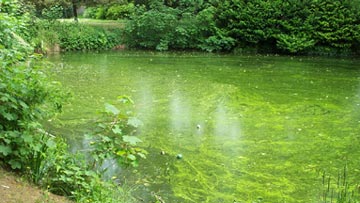
Arsenic is a chemical element found in many minerals and mixed in with metals as a strengthening agent. The chemical is notoriously poisonous to multi-cellular life, and arsenic contamination of ground water is a problem that affects millions of people around the world. Kevin Westerling of Water.com answered 5 primary questions that arise from it:
-
What are the health effects of arsenic exposure?
- Arsenic is known to contribute to heart disease, type 2 diabetes, pancreatic cancer, and cancers of the liver, skin, lungs, and bladder. Arsenic also creates a condition called arseniasis [chronic arsenic poisoning], which results in skin lesions similar to blisters. The effects of arsenic on children are more acute in their formative years, and ultimately lead to the health problems detailed above.
-
How do most municipalities plagued with high arsenic levels deal with the 10-ppb mandate?
- Strategies for utilities typically include blending, acquiring new or less/uncontaminated sources, and treatment. Smaller water supply systems often have a hard time controlling arsenic levels due to lack of funds and other resources, so they look to the non treatment options.
-
Do you consider 10 ppb to be a safe level, and do you anticipate the maximum contaminant level (MCL) to drop in the future?
- The U.S. EPA and the World Health Organization have arrived at 10 ppb based on science provided to them by organizations such as the National Institutes of Health, but, in my opinion, the level should be set at less than 5 ppb. The MCL is often a compromise between science and the cost/benefit associated with the implementation of the standard. We are now more than nine years into the domestic implementation of the 10-ppb standard, and while there are still many communities struggling with the current law, there is evolving science that suggests the standard should be reconsidered. However, I don’t see any real momentum for lowering the level, either by the EPA or the individual states, any time soon. A major contributing factor to implementation and compliance of the arsenic rule is, again, the lack of funds. In other words, it’s pretty much an unfunded mandate. Implementing a lower treatment objective, without adequate funding, would further exacerbate compliance.
-
Are there important distinctions to be made between organic and inorganic arsenic?
- Yes. Atoms of arsenic bond with other elements to form molecules. If carbon is one of these elements, then the arsenic compound is an organic compound. Organic arsenic is rarely found in natural groundwater. It’s the inorganic arsenic that is typically found in groundwater and is the more toxic form linked to detrimental health effects. If there is no carbon present, then the arsenic compound is inorganic.
-
What technologies do utilities use to effectively combat arsenic, and how do they differ?
- The most common technologies used for arsenic removal are adsorption and coagulation filtration. Adsorption is a more passive process, but can have higher operating costs for challenging waters when compared to coagulation filtration. The latter entails more operator interface and routine sludge handling. Ion exchange is sometimes used, but requires regeneration and produces a hazardous liquid waste.
For more information about how to remove arsenic from your drinking water, call us today at 619-356-3766 to find out how our EVO Filtration System can remove this deadly contaminant and countless others that are lurking in your family’s drinking water. The system not only removes the contaminants from your water, but remineralizes it for you, producing the healthiest water for you and your family.










